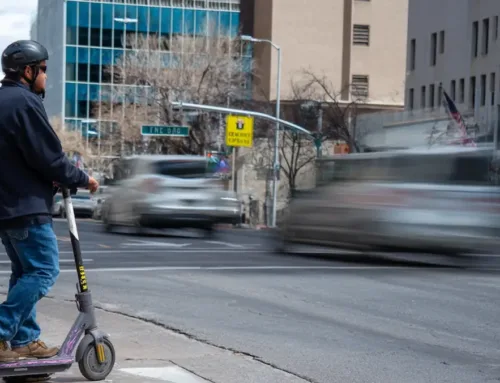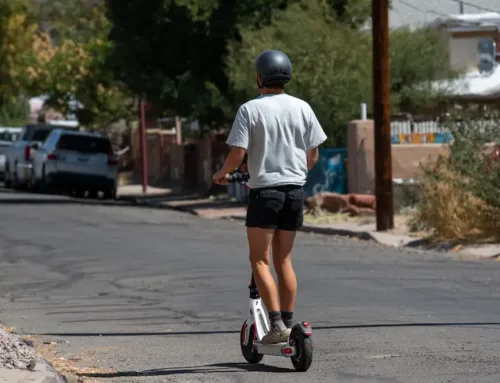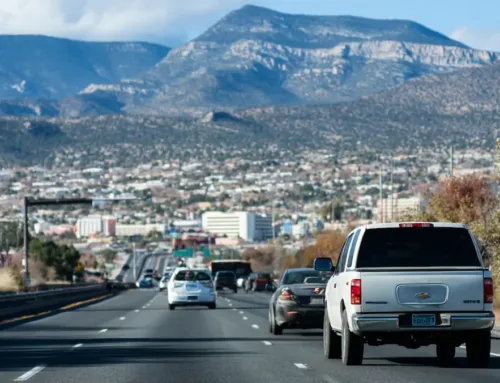Hitting a pothole or other road hazard in Albuquerque can lead to costly vehicle repairs or even serious injuries. Whether you are a driver, cyclist, or scooter rider, you may wonder if the City of Albuquerque is responsible for damages when a city street defect causes an accident. Under New Mexico law, cities have a duty to maintain public roads in a reasonably safe condition. In certain cases, the City can be held liable for injuries or property damage caused by negligent road maintenance, but there are strict legal requirements, including special notice deadlines, that you must follow. Call the personal injury lawyers at Roadrunner Law Firm if you need help with an injury caused by un unrepaired pot hole or other road damage.
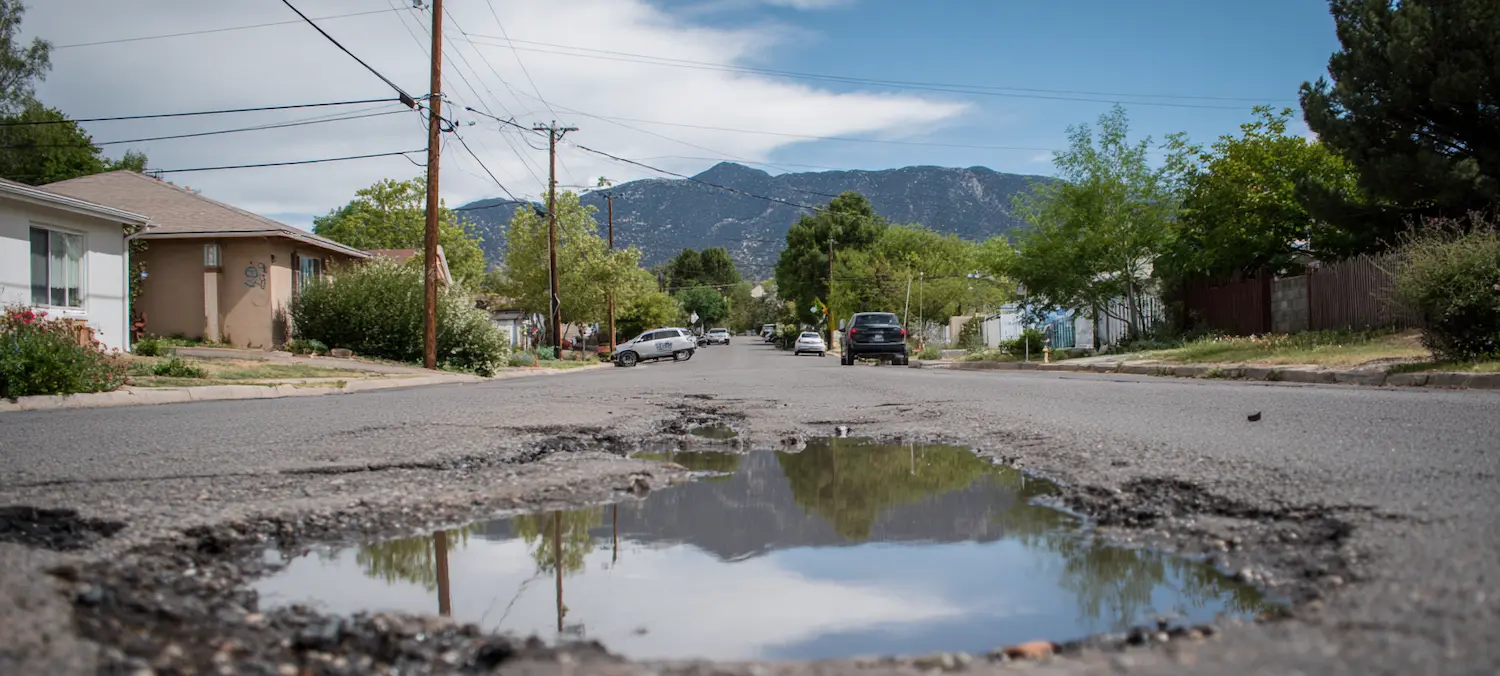
City’s Duty to Maintain Safe Roads (It’s the New Mexico Tort Claims Act!)
Under New Mexico’s Tort Claims Act, cities must maintain roads with reasonable care. New Mexico law generally grants government entities immunity from lawsuits, but the New Mexico Tort Claims Act (TCA) creates specific exceptions where the government can be sued. One key exception is for highways and streets: the TCA waives the City’s immunity for negligence in the construction or maintenance of roads, bridges, sidewalks, and similar public ways. In other words, if a City of Albuquerque employee fails to properly maintain a street (for example, ignoring a known pothole or hazard) while acting in the scope of their duties, the City can be liable for resulting bodily injury, wrongful death, or property damage. This waiver of “sovereign immunity” means injured parties have the right to seek compensation from the city, provided the case falls within the Act’s rules and isn’t barred by other exceptions.
So what counts as negligent maintenance? The City must use ordinary care to keep roads safe for the public. “Maintenance” includes not just routine upkeep but also fixing known dangerous conditions on the road within a reasonable time. New Mexico courts have held that a city or state highway department has a common-law duty to protect the public from foreseeable harm by keeping roads in safe condition. Failing to repair large potholes, sinkholes, broken pavement, or other hazards once the City is aware of them could be considered a breach of this duty. The Tort Claims Act does not allow lawsuits for design defects or the mere failure to upgrade or reconstruct roads. This means you cannot sue the City for how a road was originally designed or built, only for negligent maintenance of the road’s condition. For example, if an intersection lacks a crosswalk by design, that by itself isn’t grounds for liability, but if a pothole was reported and left unrepaired, that may be negligence.
So When Is the City Liable for Pothole Damage or Injuries?
Not every pothole incident will make the City legally responsible. You must prove the City was negligent, which in practical terms means showing the City knew (or should have known) about the dangerous road condition and failed to fix it within a reasonable time. The City of Albuquerque’s risk management division notes that they are “seldom held responsible” for vehicle damage from road conditions “where the City has not been negligent maintaining the road, or was not made aware of the problem prior to the occurrence.”
What does that mean? That’s code for “the city will fight any claims of negligence so you better have solid proof.”
In practice, the City investigates pothole claims by asking two main questions:
Did the City know about the pothole or hazard beforehand? This could be through a prior citizen report (e.g. a 3-1-1 complaint), an earlier accident at the same spot, or city employees observing it during road patrols. If the pothole appeared suddenly and no one reported it, the City may argue it had no notice of the problem and thus wasn’t negligent. If the defect was large and existed for a long enough period, the City might be deemed to have “constructive notice” (it should have known through reasonable inspections).
If the City was aware, did it fix the problem quickly? After learning of a pothole, the City must be given a reasonable chance to respond. Albuquerque officials have stated that once they are aware of a pothole, crews can often repair it within a day or two. If a known pothole was left unrepaired for an unreasonably long time and caused your incident, that delay can be evidence of negligence. Conversely, if the City received a report and repaired the pothole within a reasonable timeframe (before your accident), it may not be liable.
Because the burden of proof is on the claimant, you can only win by gathering evidence about the hazard. Photographs of the pothole and damage, 311 call logs or reference numbers, witness statements, or prior news of complaints can help establish that the pothole was hazardous and possibly known to the City. This is the kind of thing your lawyer can help with.
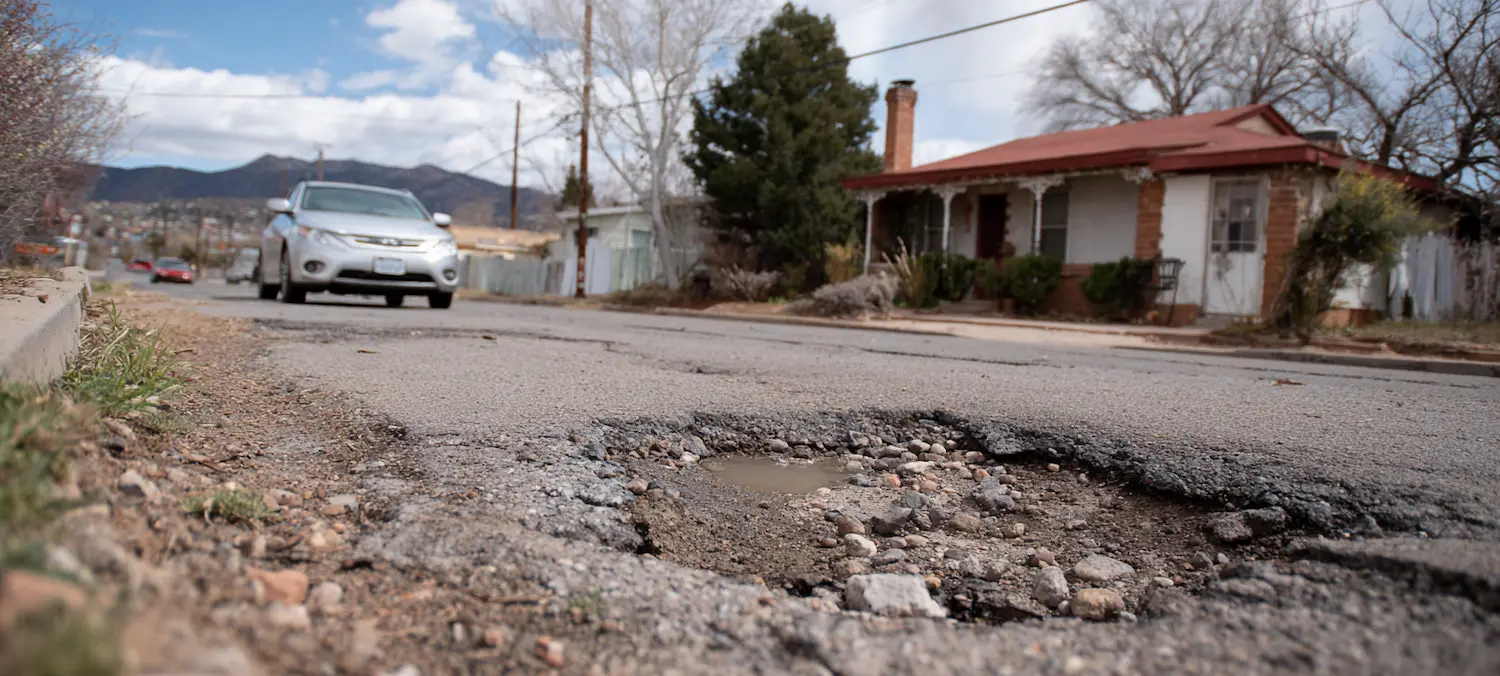
Filing a Tort Claim Against the City (90-Day Notice Requirement)
If you believe the City’s negligence caused your injury or vehicle damage, you must follow a specific legal process to seek compensation. New Mexico law requires giving the government formal notice of your claim within a short deadline. For claims against a city (a municipality), you must submit a written Tort Claim Notice to the Mayor of Albuquerque within 90 days of the incident in most cases. This notice is mandatory under the Tort Claims Act. Failing to provide it on time can bar you from later filing a lawsuit.
Your written notice of claim should state the date, time, place, and circumstances of the accident and the resulting injury or damage. In Albuquerque, the Risk Management Division provides an official Tort Claim Notice form (including an online submission option) to help claimants include all necessary details. When you file, be sure to deliver or send it to the Mayor’s Office (as the law specifies) and keep proof of when you submitted it. The City will then conduct an investigation to determine if it was at fault and should pay the claim.
Exceptions: The 90-day notice clock starts running from the date of the incident. New Mexico law pauses (tolls) the 90-day period during any time you are incapacitated by the injury, for up to 90 days of incapacity. This means if you were hospitalized or unable to function for, say, 30 days after the accident, that 30 days wouldn’t count against the deadline. For wrongful death claims, the law gives a bit more time. Notice may be given by the family or estate within six months of the accident. It’s always safest, though, to file the notice as soon as possible after the incident. If the City (or its employees) already had “actual notice” of the incident (for example, if police or city staff witnessed it), that can sometimes substitute for your written notice, but you should not rely on that.
Deadlines to File a Lawsuit (Statute of Limitations)
Giving timely notice is just the first step. There is also a statute of limitations for filing a lawsuit if you cannot reach a satisfactory settlement with the City. Under the New Mexico Tort Claims Act, any lawsuit against a governmental entity must be filed within 2 years of the date of the occurrence that caused the injury or damage. This two-year statute of limitations is strict. If you wait longer than two years, the court will likely dismiss your case as “time-barred.” (Notably, New Mexico’s standard personal injury limit is three years, but claims under the Tort Claims Act are limited to two years by law.)
The only major exception is for very young victims: if a child under age 7 is injured by a road hazard, the law extends the filing deadline until the child’s 9th birthday. This provides extra time for families to bring a claim on behalf of toddlers or young children who are hurt. Aside from that narrow exception, all other claimants (including parents of injured older children) must adhere to the 2-year timeframe. This limitations period is separate from the 90-day notice requirement. Providing the 90-day notice does not stop the 2-year clock. You must still file suit within two years if you are in settlement talks or waiting for the City’s response. Mark your calendar and do not miss this deadline.
Compensation Limits and Available Damages
When the City of Albuquerque is found liable for a pothole-related injury or damage, what can you recover? The Tort Claims Act sets specific caps on damages for claims against government entities. In New Mexico, government liability is capped at:
- $200,000 for property damage (e.g. vehicle repair or replacement costs) per accident.
- $300,000 for medical expenses for any one person’s injuries.
- $400,000 for all other damages for one person’s claims arising from a single incident. “Other damages” includes things like pain and suffering, lost wages, etc., but excludes the medical expenses and property damage which are separately capped as above.
There is an overall aggregate cap of $750,000 for all damages (other than medical costs) arising from a single occurrence. This means if multiple people are injured in the same incident (for example, several cars hit the same pothole in one pile-up), their combined non-medical recoveries against the City are limited to $750,000 total. These caps are the maximum the City will have to pay, even if a jury might otherwise award more in a regular case. Punitive damages are not allowed against the City, and you also cannot recover pre-judgment interest on your claim. If you do get a judgment, the law does allow for post-judgment interest at a modest rate until payment is made.
In practical terms, these caps mean that for most pothole claims, which typically involve property damage and maybe minor injuries, the available compensation should cover the losses (e.g. car repairs under $200k). But if someone suffers a very serious injury (say a cyclist is gravely hurt by a road defect), the $400k cap on non-medical damages may limit full recovery. Be aware of these limits when evaluating the claim’s value. Your recoverable damages may include: the cost to repair your vehicle or bike, medical bills (hospital, rehab, etc.), lost income if you missed work, and general pain and suffering from the injury, up to the cap amounts. Always keep receipts and documentation, because the City has caps, you’ll need to prove the amount of your losses to claim compensation (the City won’t pay without evidence of the costs or harms you incurred).
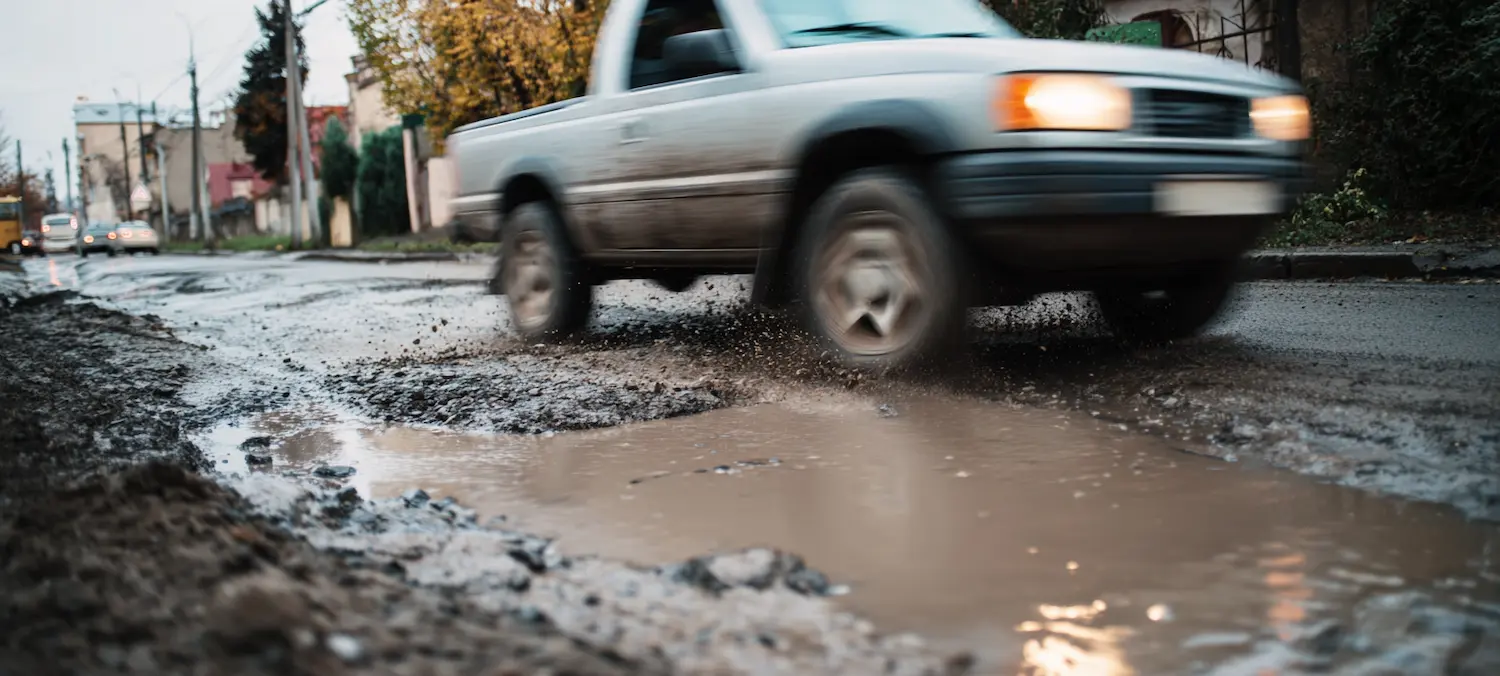
Steps to Take After a Pothole Accident in Albuquerque
If you hit a pothole or road hazard and suffer an injury, taking the right steps can protect your potential claim against the City. Here are some practical steps for drivers, bicyclists, or scooter riders to follow:
Check Safety and Call for Help: First, make sure you and others are safe. Move out of traffic if possible and call 911 if anyone is injured. For less urgent situations, you can call the Albuquerque Police non-emergency line or 311 to report the incident. If your vehicle is disabled, you might need roadside assistance or police help to move it.
Document the Scene: If it’s safe, take photos of the pothole or hazard that caused the damage. Include an object for scale if possible to show the size and depth of the pothole. Also photograph your damaged tire, wheel, bike, or injuries. This evidence is crucial for proving what exactly caused your damage. Note the exact location (street name or mile marker, nearest address, etc.) and the date/time. If there are witnesses (passengers or bystanders), get their names and contact information. They might confirm that the pothole was present and caused the accident.
Report the Hazard: Notify the City about the dangerous condition. You can report the pothole to Albuquerque’s 311 service (by phone or the online app). This creates an official record that the pothole existed. Reporting the pothole immediately not only helps get it fixed for safety, but also establishes that the City is now aware of it. Keep a copy of the 311 service request or reference number. If police responded, ask for a copy of the police report as well, which may describe the road conditions.
Save Records of Damage and Expenses: Keep all evidence of the damage and costs you suffered. For vehicle damage, get a repair estimate or invoice; save receipts for new tires or parts. For personal injuries, keep medical records and bills from doctors, urgent care, etc. Also track any other expenses (for example, towing bills or the cost of a rental car while yours is in the shop). These documents will be needed when you file your claim to demonstrate your losses.
File a Formal Tort Claim Notice (Within 90 Days): Don’t delay in starting the claims process. As explained above, you must submit a written notice of claim to the Mayor’s Office within 90 days of the incident. The City has an online Tort Claim Notice form, or you can write a letter with the required details. Include the when, where, and how of the incident, and describe the damage/injury. Be sure to emphasize that the cause was a road defect (e.g. “a large pothole on Main St. approximately 200 feet west of 1st Street”) and mention any prior reports if you know the City had notice. It’s wise to send the notice via certified mail or another method that provides proof of delivery. Filing this notice on time is critical. Without it, your claim can be dismissed.
Consult an Attorney (For Serious Injuries): Government liability cases can be complex. An experienced New Mexico personal injury attorney can help make sure deadlines are met, and help gather evidence of the City’s negligence. Proving notice and negligence often requires city maintenance logs, prior complaints, or filing public records requests. An attorney can assist with these. If the City denies your claim or offers a low settlement, a lawyer can advise on filing a lawsuit within the 2-year limit. While you are not required to have an attorney to file the claim, getting legal advice is highly recommended if you suffered significant injuries or damages.

